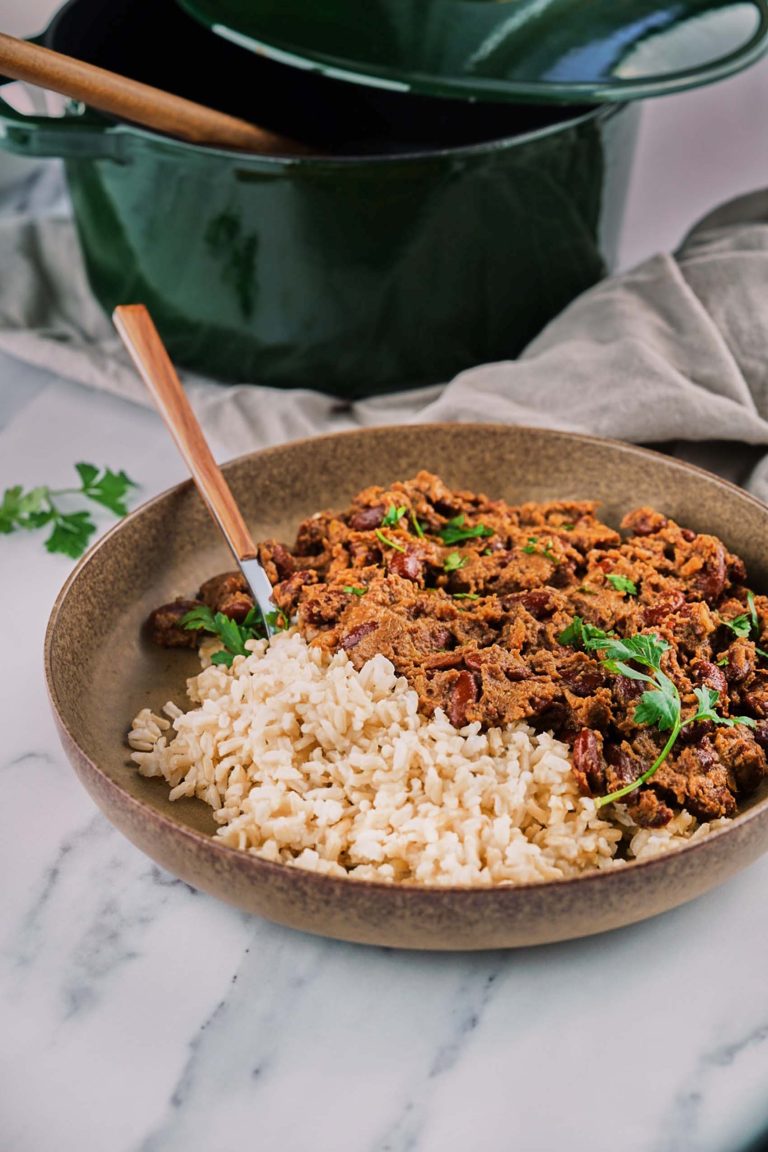Shrimp Risotto: Health Benefits and Culinary Delights
Shrimp risotto combines Italian rice-cooking techniques with seafood flavors. Risotto originated in Northern Italy, especially the Lombardy and Veneto regions. Traditionally, Italians prepare risotto using Arborio rice, broth, and other ingredients like vegetables or seafood. The application of these techniques to create shrimp risotto results in a rich, creamy dish that highlights the delicate taste of shrimp.
Key Ingredients
Shrimp risotto contains a few essential components, ensuring the final dish is rich in flavor and texture.
- Arborio rice: Short-grain rice that creates the creamy consistency risotto is known for.
- Shrimp: Use fresh or frozen shrimp to enhance the seafood flavor.
- Broth: Chicken or vegetable broth imparts depth to the dish.
- White wine: Adds acidity and complexity to the flavor profile.
- Butter: Incorporates richness and a silky texture.
- Parmesan cheese: Grated cheese enhances the creaminess and adds a nutty flavor.
- Garlic and onion: Provide a savory base for the risotto.
- Olive oil: Used to sauté the onions and garlic.
Prepare these ingredients with care to create a restaurant-quality shrimp risotto at home.
Crafting the Perfect Shrimp Risotto
Step-by-Step Cooking Guide
Begin by gathering all necessary ingredients, ensuring freshness for the best result. Use Arborio rice, shrimp, broth, white wine, butter, Parmesan cheese, garlic, onion, and olive oil.
- Prepare the Ingredients: Finely chop garlic and onion. Clean and devein shrimp, retaining the shells for broth. Measure rice, wine, and broth.
- Create the Shrimp Broth: Sauté shrimp shells in a pot with a little olive oil until pink. Add water and simmer for 20 minutes. Strain and keep warm.
- Sauté Aromatics: Heat olive oil and butter in a pan. Add chopped onions and garlic, sautéing until translucent.
- Toast the Rice: Add Arborio rice to the pan, stirring until coated and slightly toasted.
- Deglaze with Wine: Pour in white wine, stirring until fully absorbed by the rice.
- Incorporate Broth Gradually: Add warm shrimp broth, one ladle at a time, stirring constantly. Wait for the liquid to be absorbed before adding more.
- Cook the Shrimp: In the final minutes of cooking, mix in the cleaned shrimp. They should turn pink and firm within three minutes.
- Finish with Butter and Cheese: Remove the pan from heat. Stir in butter and Parmesan cheese until creamy.
Expert Tips and Variations
Enhance your shrimp risotto by following these tips and incorporating variations:
- Maintain Broth Temperature: Keep the broth warm throughout cooking. Cold broth hinders the rice from cooking evenly.
- Use Fresh Ingredients: Opt for fresh shrimp and high-quality Arborio rice for the best flavor and texture.
- Add Depth with Stock: Use seafood stock instead of water when making shrimp broth for a richer taste.
- Incorporate Vegetables: Add peas, asparagus, or mushrooms for added texture and nutrition.
- Experiment with Herbs: Fresh herbs like parsley, basil, or thyme complement shrimp risotto well.
- Control the Consistency: Adjust the risotto’s creaminess by altering the amount of butter and cheese used.
Apply these methods and variations to elevate your shrimp risotto, creating a dish that not only satisfies but impresses.
Pairing Wine with Shrimp Risotto
Best Wines for Seafood Dishes
When choosing wine for seafood dishes like shrimp risotto, focus on varieties that enhance the delicate flavors. Look for wines with crisp acidity and light to medium body. Here are a few excellent choices:
- Sauvignon Blanc: This wine offers zesty, citrus flavors and herbaceous notes, complementing the mild, sweet taste of shrimp.
- Pinot Grigio: With its light, crisp profile and notes of green apple and pear, Pinot Grigio balances the creamy texture of risotto.
- Chardonnay: Opt for unoaked Chardonnay to enjoy its bright acidity and flavors of green apple, which elevate the dish’s richness.
- Albariño: This Spanish white wine features high acidity and mineral notes, enhancing seafood’s natural brininess.
- Vermentino: Vermentino’s citrus and herbal flavors pair nicely with the risotto’s savory elements.
How to Pair Flavors
Pairing wine with shrimp risotto involves balancing the dish’s creaminess, seafood essence, and subtle seasonings. Keep these tips in mind:
- Match Acidity: A wine with high acidity can cut through the risotto’s creaminess, providing a refreshing contrast. Sauvignon Blanc and Albariño are excellent choices for this reason.
- Complementary Flavors: Select wines that echo the dish’s flavors. For instance, a wine with citrus notes like Vermentino or Sauvignon Blanc complements the lemon typically used in shrimp risotto.
- Avoid Overpowering: Choose wines with a light to medium body. Heavy wines might overwhelm the delicate flavors of shrimp and risotto.
- Consider Aromatics: Wines with subtle herbal or floral notes can enhance the dish’s aromatics, especially if you’ve incorporated herbs like parsley or thyme into your risotto.
Using these guidelines, you can elevate your shrimp risotto dining experience with the perfect wine pairing.
Health Benefits of Shrimp Risotto
Nutritional Breakdown
Shrimp risotto offers several health benefits due to its balanced composition of nutrients. Shrimp, the key ingredient, provides high-quality protein and essential vitamins and minerals. For every 100 grams, shrimp contains about 20 grams of protein, making it an excellent source of lean protein. It also contains omega-3 fatty acids, which support heart health, reduce inflammation, and improve overall brain function.
Arborio rice, used in risotto, is rich in carbohydrates, which supply the body with energy. It contains about 77 grams of carbohydrates per 100 grams, providing your body with a steady glucose supply. While not a significant source of fiber, its combination with shrimp’s protein helps in overall digestion.
Parmesan cheese adds calcium, which is crucial for bone health. A small serving of Parmesan, around 28 grams, provides around 331 mg of calcium. This also supplies phosphorous, enhancing bone and teeth strength.
Dietary Considerations
When incorporating shrimp risotto into your diet, consider allergens and dietary restrictions. Shellfish allergies are common and can be severe, so confirming no allergy exists is crucial before consumption. Additionally, using low-sodium broth can mitigate elevated sodium levels, which could affect blood pressure.
For those lactose intolerant, dairy-free substitutes for Parmesan cheese exist that still provide a creamy texture and umami flavor. A splash of non-dairy milk or nutritional yeast can mimic these characteristics without dairy content.
The calorie count for shrimp risotto can be managed by adjusting portion sizes or substituting lower-calorie ingredients where possible. Using brown Arborio rice instead of the traditional white rice increases fiber intake, aiding digestion and supporting longer satiety periods.
Overall, shrimp risotto can be a nutritionally beneficial dish, provided individual dietary constraints and health considerations are accounted for.
Conclusion
Shrimp risotto isn’t just a treat for your taste buds; it’s a well-rounded dish that can fit into a balanced diet. By understanding its nutritional benefits and considering any dietary restrictions, you can enjoy this luxurious meal without compromising your health goals. So the next time you’re craving something both indulgent and nutritious, give shrimp risotto a try. You’ll not only savor every bite but also reap the benefits of a thoughtfully prepared dish.






